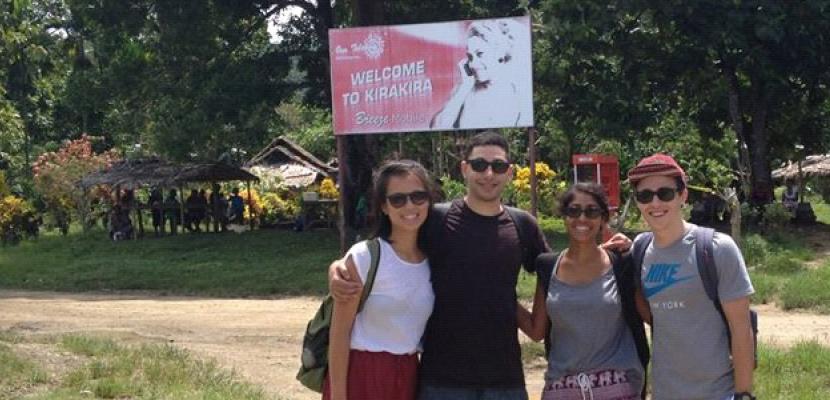
Bond University has sent a group of medical students to the Solomon Islands to gain valuable experience working in the healthcare system of a developing nation, after securing funding from the Australian Government through the New Colombo Plan (NCP).
The first four final year medical students have just returned from a two-week clinical placement at the remote Kirakira Hospital on Makira Island.
During 2013 and 2014, more than 60 final year Bond University medical students have undertaken their clinical elective at the Kirakira Hospital, which has included visits to the local communities. The NCP funding will allow another 60 medical students to visit the Solomon Islands over the next two years.
The Government's NCP is aimed at strengthening knowledge and ties with key countries in the Indo-Pacific region.
The medical students who recently returned, Bernadette Tran Nguyen, Priya Sekar, Justin Lewis and Nicholas Bell-Allen, supervised on location by Bond University’s Associate Professor Dr James Fink, said the opportunity to work at the Kirakira Hospital had been invaluable.
The 60-bed Kirakira Hospital is the only hospital on the island of Makira, which has a population of around 40,000.
Ms Tran Nguyen said that after spending last year undertaking placements in Australian hospitals, working at the Kirakira Hospital had opened her eyes to how Third World countries cope with limited resources.
As the hospital's two doctors were on leave during the students' placement the students worked in pairs with the nurses.
"While Kirakira may only be a three-hour flight from home, it is such a different place and in need of so much help. I have heard of people walking for hours just to get to the hospital," said Ms Tran Nguyen.
"It was rewarding to apply the skills we have learnt to treat people and help save lives, for example, a pregnant woman we treated was having seizures. You would rarely see this in Australia. It's something you prepare for and would prevent from happening at all costs, so to actually see it in real life was confronting.
"We all worked together to stabilise her enough to send her to the larger hospital in Honiara the next day. That is the experience that stands out the most, because I believe we did save her life."
Ms Priya Sekar said the students had learnt a lot from the experience, with patients presenting with conditions they would rarely see in a developed country.
"We had a baby who had lost a lot of weight and we were told might be septic. I had never seen a baby that underweight before," she said.
"We treated a lot of cases of malaria and other infectious diseases and saw manifestations of infections and injuries we would never see in Australia.
"At the same time, we were working with far fewer resources. They do not have electrocardiograms or oxygen in every room and generally the equipment is a lot more limited.
"It was an amazing opportunity and the things I've done and seen, I probably won't get the opportunity to do again. I am a better medical student from this experience."
Dr Fink said the Solomon Island experience gave the students valuable experience that would aid their transition to the full-time workforce next year.
"They are on the front line in terms of the skills and knowledge they need to apply to diagnosis and treat at Kirakira," he said.
"Often, the patients present a lot later than they would in Australia. For example, in the case of a child who has broken his arm, the parents would see a traditional healer first, then weeks later present because the bone hasn't healed.
"It is a real step-up for the students and they probably won't have this much involvement again until they graduate as doctors later this year. "
ENDS